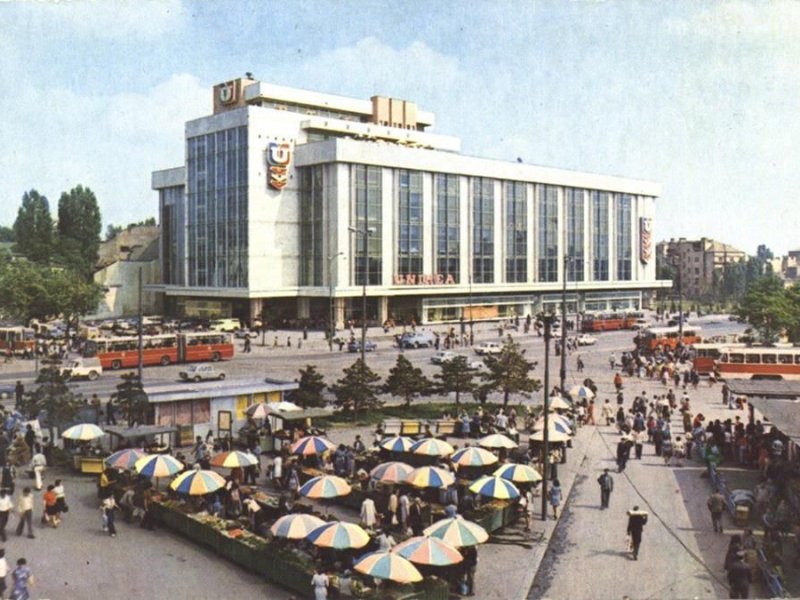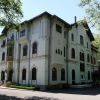Unirea Shopping Center – a mirror of a changing Bucharest

By Bucharest Team
- Articles
In the center of the capital, where the city’s grand boulevards converge in Piața Unirii, a massive building has dominated the skyline for almost half a century. Unirea is not just a shopping center. It is a landmark of the city, a silent witness to Bucharest’s transformations – from the architectural ambitions of late communism, to the consumerist fever of the 1990s, and finally to today’s fierce competition between malls.
A showcase project for Romanian communism
The story begins in 1975, when architect Gheorghe Leahu was tasked with designing what would become the largest “department store” in the capital. Inaugurated on September 2, 1976, in the presence of Nicolae Ceaușescu, the store was presented as the “flagship of Romanian commerce”. The chosen name, Unirea (“Union”), was a political marketing decision as carefully calculated as the building’s proportions. Initially it was to be called “Magazinul Universal Central” (“Central Department Store”), in line with major shopping centers in Moscow and Sofia, but the final choice carried a stronger symbolic weight.
Expansion and urban sacrifices
In the 1980s, Unirea quite literally spread its wings. Two new sections were added, one toward Călărași and another toward Bulevardul Unirii. This expansion was not just an architectural decision, but one with political urban planning stakes. The building became an integral part of the new Centrul Civic (“Civic Center”), a project launched after the 1977 earthquake to balance the monumental presence of the Palace of Parliament.
But these transformations came at a cost. Hala Unirii, a historic market hall built in 1872, was demolished in 1986 along with other buildings in the area. In their place, Unirea’s concrete and glass facade came to dominate the square.
Capitalism comes knocking
The 1989 Revolution completely changed the nature of the place. Shelves with standardized goods gave way to the bright displays of international brands. Sony, Adidas, Nike, and even Romania’s first McDonald’s opened here, turning the building into a magnet for novelty.
The 2000s brought another wave of change. The Spanish group Inditex entered the market, transforming Unirea into what the press called the “fashion kilometer zero” of Bucharest. Romania’s first Zara opened here in May 2009, followed by Bershka and Pull&Bear.
It was a period when Unirea seemed unshakable – until the market shifted once again.
From the podium to survival
The expansion of large suburban shopping malls, growing competition, and more recently, the pandemic, hit both foot traffic and tenants hard. The closure of Inditex stores was a clear sign. In their place, the ground floor filled with fast-food outlets, bakeries, and pretzel stands. This was not just a tenant reshuffle, but a repurposing of the space – from international fashion to quick, affordable food.
Today, the building covers 83,971 m² over four floors, with a parking lot offering 1,000 spaces. Around 250 shops still operate, including Koton and several local brands, alongside cafés and restaurants. But the image has changed: vacant units, closed-off areas, partially renovated facades, and even safety issues such as blocked emergency exits have begun to make headlines.
Between memory and the future
Magazinul Unirea remains an urban anchor. For some, it’s a relic of childhood, the place where they first saw Western clothes in a shop window or ate their first hamburger. For others, it’s just a massive building they hurry through on the way to the metro.
The question is whether Unirea can reinvent itself in a Bucharest where the commercial landscape is dominated by ultramodern malls. Its history shows it knows how to adapt – but also that every reinvention has come at a cost.
Also recommended When was the Unirea Shopping Center in Bucharest built, what is its total floor area, and why are major brands reluctant to rent retail space there?






























